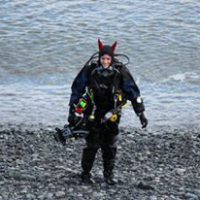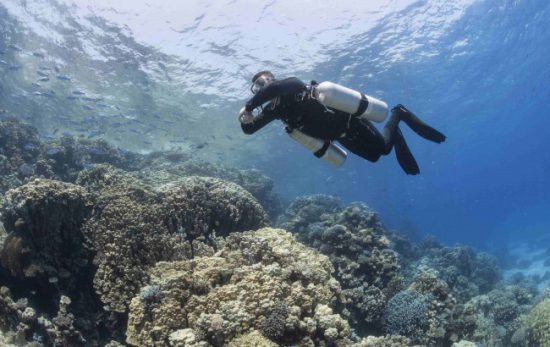Thanks to their distinctive stripes, fun name and, of course, the instant fame they gained from the movie Finding Nemo, clownfish are arguably the ocean’s most popular and widely recognized fish. For these reasons, clownfish, or what are sometimes called the “Nemo fish,” are now a commonly sought after target species for scuba divers when exploring the underwater world.
However, while Nemo might be a well-known name, many people, including marine life enthusiasts looking for the Nemo fish, actually know very little about the real clownfish behind the 2003 cartoon. To ensure you’re in the know about everyone’s favorite fish, we’ve put together a list of some of the best facts about these truly fascinating fish.
From their picky house-choosing habits to their mucus-covered skin, here are 15 interesting facts about the Nemo clownfish.
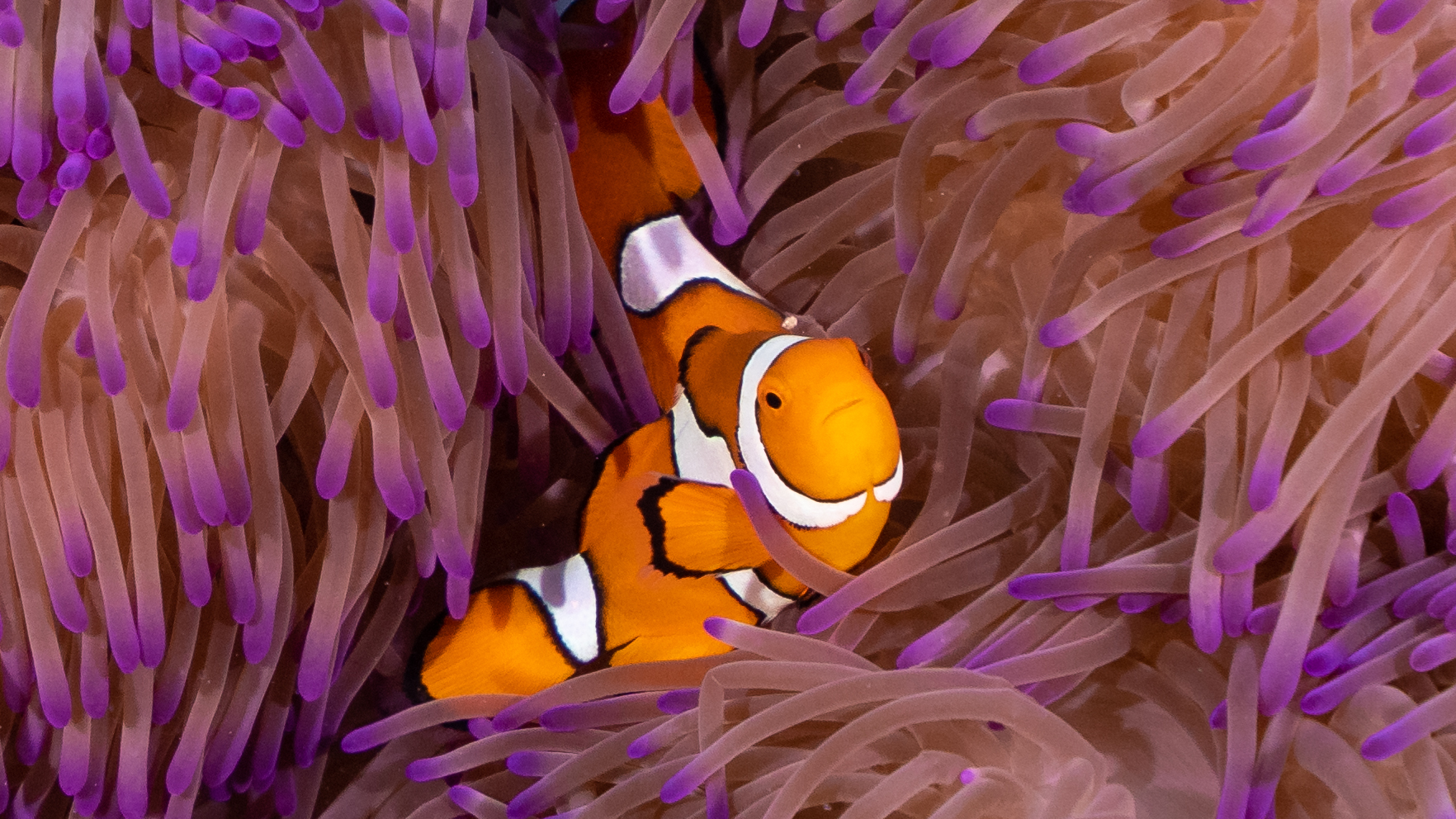
Facts About the Nemo Clownfish
While the on-screen representation of this eye-catching fish was undoubtedly cute and appealing, it wasn’t entirely accurate. Here are 15 fun facts about Nemo clownfish that you might not know.
1. They Have Symbiotic Relationships With Sea Anemones
Clownfish have a symbiotic relationship with the sea anemones they live in. The Nemo fish residing in the anemone, which is often more than one, help by removing dead tentacles, attracting prey, and circulating water. In exchange for this, the clownfish receive food and shelter from the anemone (check out our article on symbiotic relationships here).
2. They Live in Tropical Waters
Nemo clownfish mostly inhabit tropical waters and coral reefs. They are typically found in the Red Sea, both the Indian and the Pacific oceans, as well as throughout the Great Barrier Reef. It’s worth noting that no Nemo clownfish live in the Atlantic Ocean.
The percula clownfish (Amphiprion percula), which is the exact clownfish species Nemo was based on, lives in the coral reefs and warm waters of Australia, Singapore, the Solomon Islands and Indonesia.
3. There Are 30 Recognized Species of Clownfish
There are currently 30 recognized species of clownfish (also known as anemonefish). The majority of these fish (29 out of 30), belong to the genus Amphiprioninae.
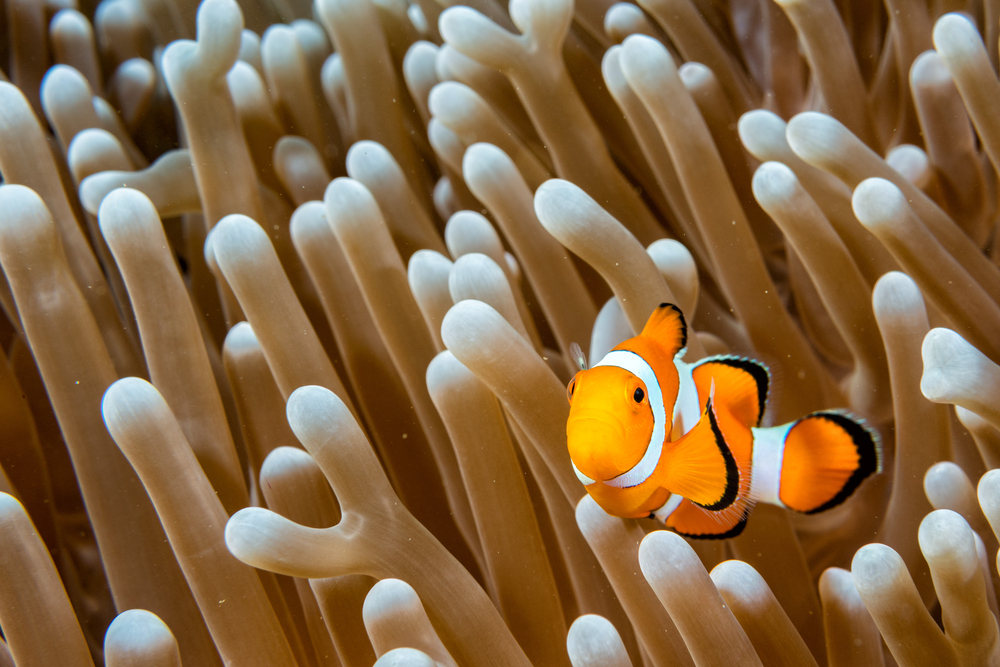
4. They Can Be Different Colors — Not Just Orange and White
Clownfish are most commonly pictured as being orange with white stripes. This is thanks to the Nemo fish effect from the 2003 movie. However, clownfish come in a variety of different colors, including red, maroon, pink and yellow.
5. They Can Lay Thousands of Eggs at One Time
Depending on the exact species, a female clownfish may produce thousands of eggs in a single laying. Additionally, clownfish will often lay their eggs in conjunction with the appearance of a full moon. The eggs can also hatch at any time of year.
6. They Are Highly Territorial
Despite the cute persona in the Disney movie, clownfish are highly territorial. Clownfish, including the Nemo fish, are defensive critters. If approached, they will attempt to intimidate potential predators by jolting forward in an aggressive manner. For this reason, they should be left alone by otherwise curious divers.
Sadly, this means that in Finding Nemo, Marlin’s friendship with Dory, the blue tang, and Nemo’s friendship with the fish tank leader, Gil (the moorish idol), the germophobic Gurgle (the royal gramma), and the other friends he met along the way were purely fictional — sorry!
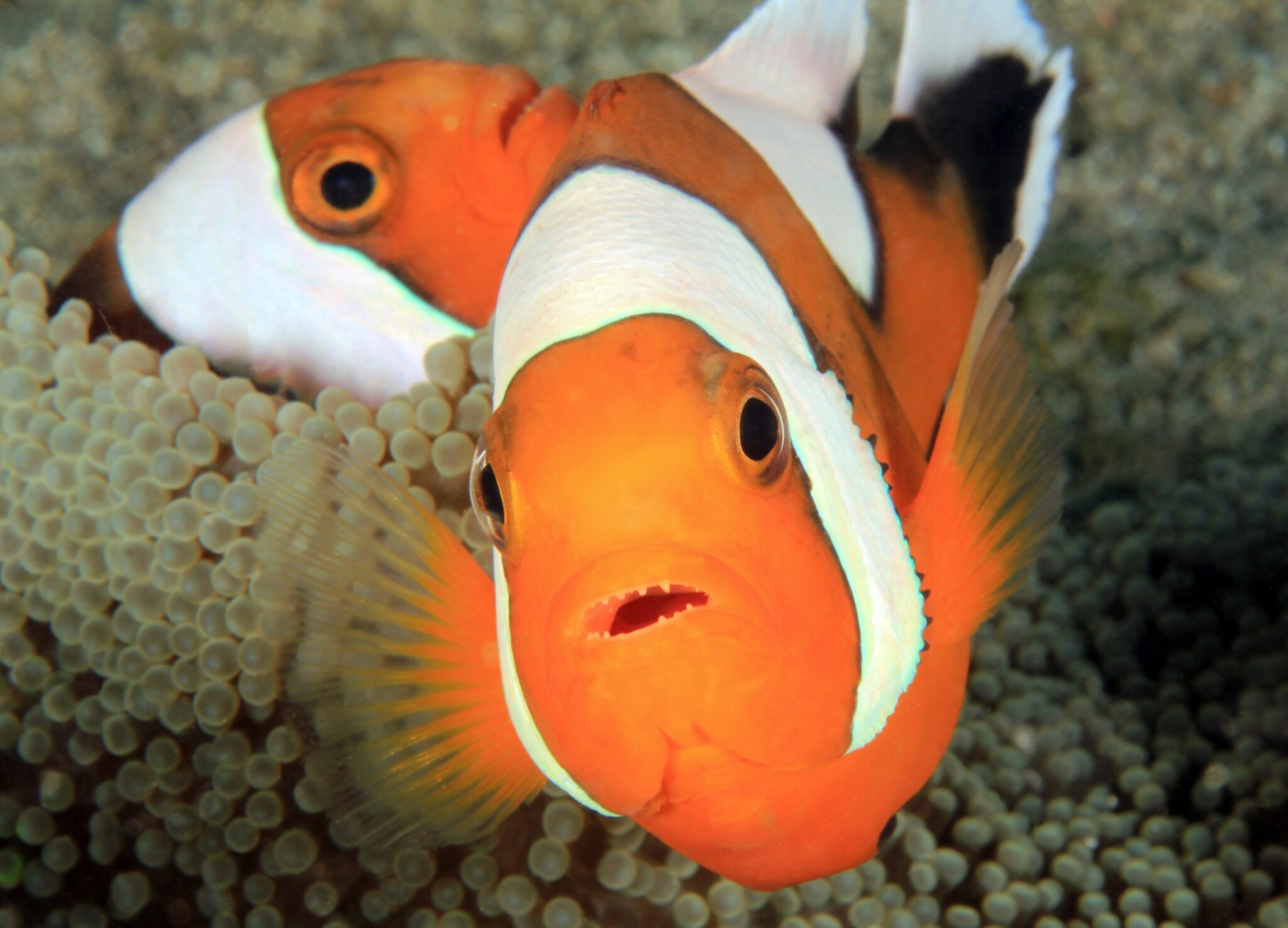
7. The Male Clownfish Protect and Look After the Young
During the egg phase, the male clownfish protects the eggs. He will also look after the young fish, while the female only occasionally helps out. It’s common for most of these baby fish to survive into adulthood.
For Finding Nemo enthusiasts looking for film accuracy, it is actually correct that the father of Nemo, Marlin, was the primary caregiver — even though it was suggested that Nemo’s mother and 400+ siblings were eaten by a barracuda.
8. They Have a Layer of Mucus on Their Skin
Thanks to a protective layer of mucus, clownfish, unlike non-mucus-covered fish, are not affected by their host anemone’s deadly sting. This is how these fish can live in a potentially deadly environment.
In addition, touching a clownfish may remove this protective layer of mucus, leaving it susceptible to stings. So remember, if you see a clownfish — look but do not touch!
9. They Are Omnivorous
Clownfish, including the Nemo fish, are omnivores. This means they eat both plants and meat, including algae, plankton, and small invertebrates. In some extreme cases, clownfish will even eat the tentacles of the anemone they live in!
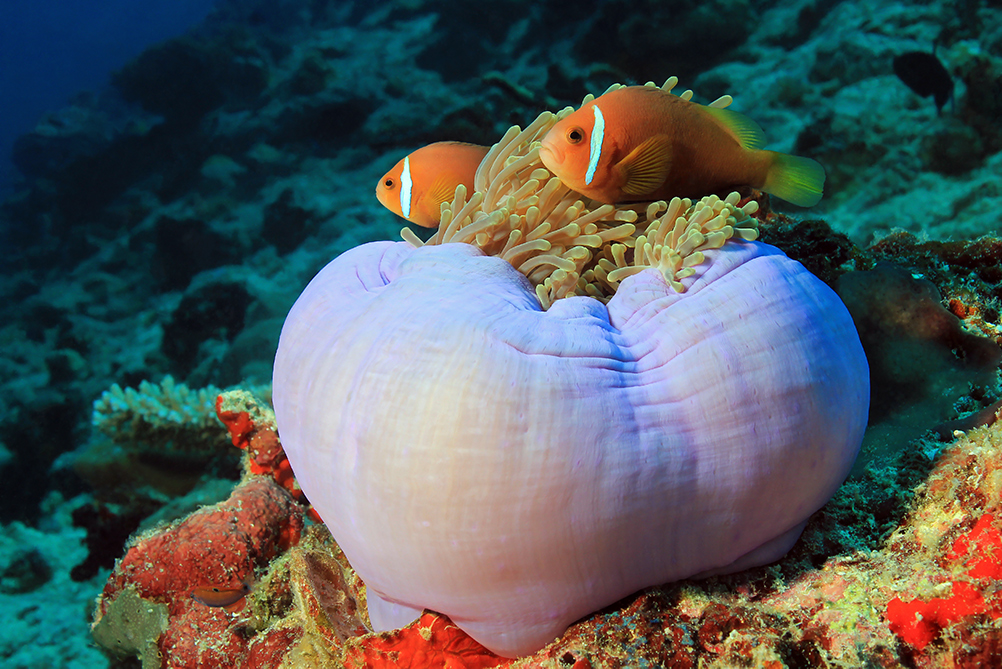
10. They Can Live for Up to 10 Years (or More)
Clownfish have a shorter lifespan when kept in aquariums. As pets, clownfish may only live for three to five years. In their natural environment — the ocean — a clownfish may live up to 10 years or more.
12. All Clownfish Are Born Male — But Can Become Female!
All clownfish are born and will grow up to become male. A male clownfish will only become female if the dominant female of a group dies.
11. There Is Only One Female in a Clownfish School
Clownfish schools only have a single, dominant female. There is also just one dominant male. If the dominant female dies, one of the dominant males changes sex and becomes the dominant female. A new dominant male will come from the largest male fish in the school.
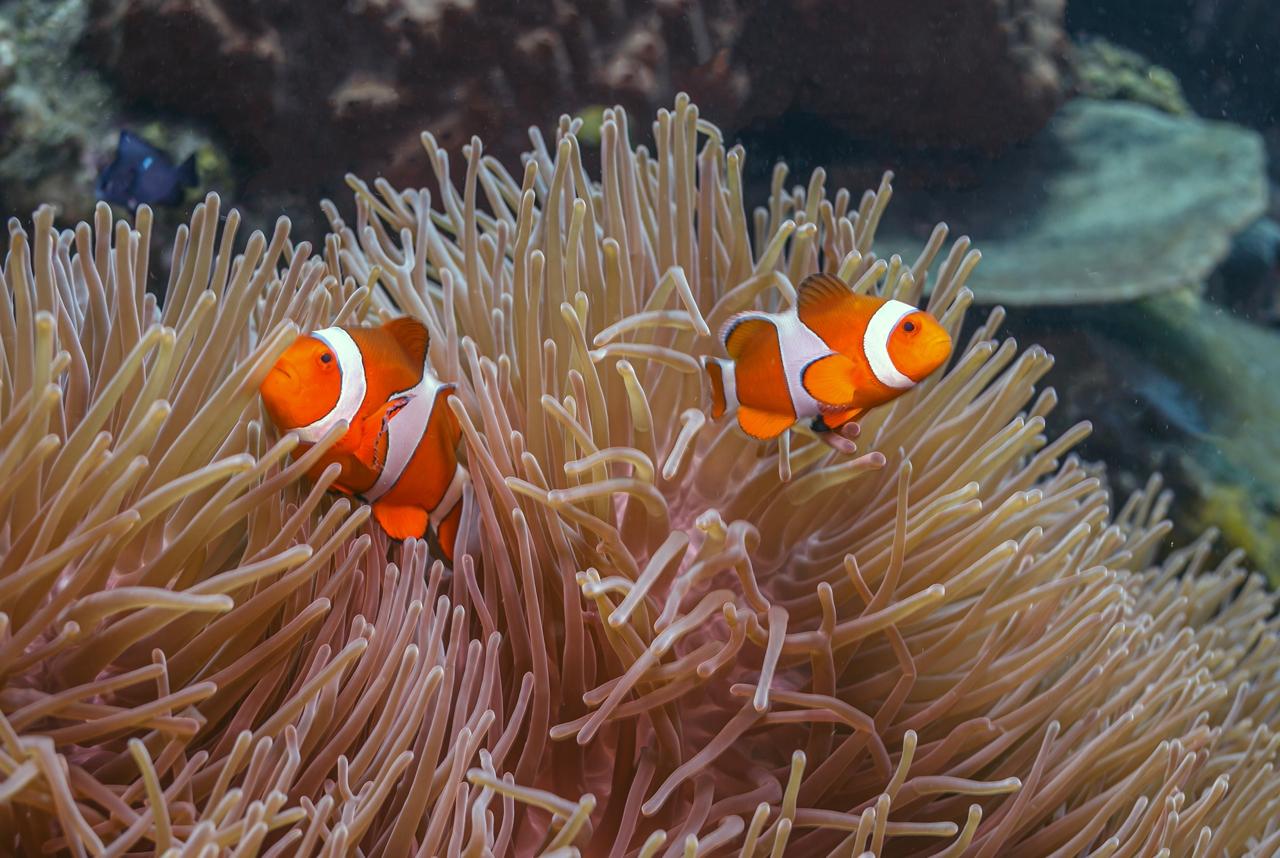
13. They Are Picky About Which House They Live In
Clownfish will not live in just any anemone. Only certain anemone species are suitable homes for clownfish. Furthermore, once a clownfish finds a suitable anemone, it must acclimatize to the anemone’s sting by gently touching its tenticles.
14. They Communicate By Popping and Clicking
Nemo clownfish are surprisingly social fish. They communicate with each other using clicking and popping sounds.
15. Some Clownfish Populations Are Decreasing
Even though the clownfish remain rated as Least Concern on the IUCN database, some populations of clownfish are decreasing. Climate change, which leads to reduced suitable habitat, and overfishing may be contributing factors to this decline.
Want to Find a Nemo Fish for Yourself?
Feeling inspired to get in the water and see a clownfish with your own eyes? These colorful critters live in a number of tropical destinations, from Egypt to Australia. For more information, or to book your getaway, click below or get in touch via email, chat or phone, to talk with the experts at PADI Travel.
